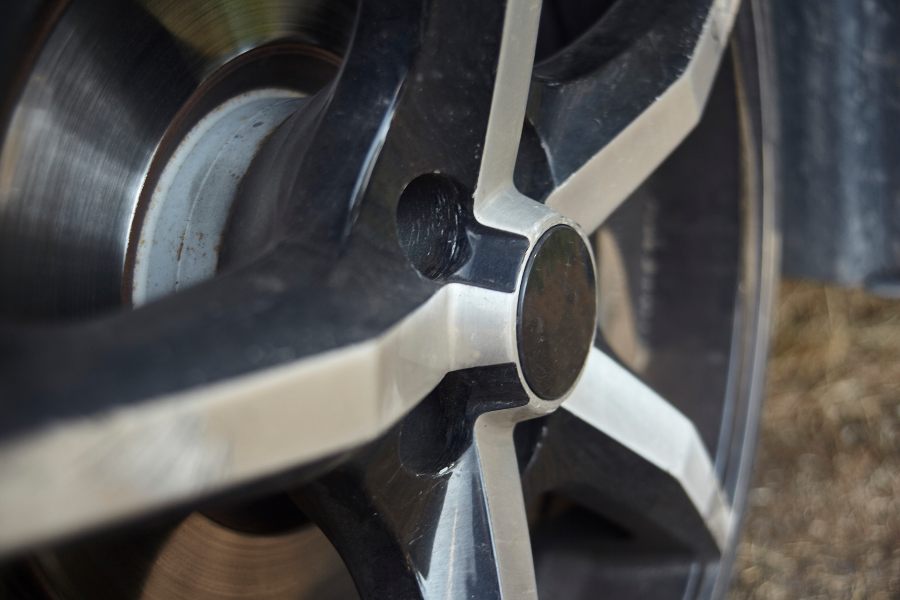What’s the Difference Between OEM and Aftermarket Wheels?
What are OEM Wheels?
OEM stands for Original Equipment Manufacturer and is a term used to describe the wheels that the automaker makes specific to each vehicle that rolls off of the assembly line. Typically, the OEM wheels will all be identical for the model of a vehicle in the same year and may be the same stock choice over multiple manufacturing years or model design changes.
Most auto manufacturers offer a choice of trim levels for each model of car or truck they produce, which can give a choice of the size or appearance of their wheels. However, these choices are often limited to two or three options. As a result, design customization is quite limited.
What’s Different About Aftermarket Wheels?
Whereas OEM wheels prioritize cost-effectiveness, safety, and mass production, this can lead to limitations in terms of materials, design options, and customization. Aftermarket wheels, on the other hand, provide drivers with an entire world of custom options to choose from when outfitting a car.

Detail of a wheel rim the aftermarket sports league of a car.
Aftermarket Wheel Design Features
When it comes to custom aftermarket wheels, the look and feel can be as unique as the car’s owner wants to make it. The huge variety of design options is a major appeal to those looking to buy new wheels. Some design elements you can choose from in aftermarket wheels include:
Finish:
- Chrome: Shiny and reflective, chrome finishes are known for their high luster and timeless look.
- Painted: Painted finishes come in various colors and can be customized to match the vehicle’s paint.
- Matte: Matte finishes lack the shine of chrome and painted finishes, creating a more subdued and contemporary appearance.
- Polished: Polished wheels have a mirror-like surface achieved through mechanical polishing.
- Spoke Design:
- Multi-Spoke: Wheels with numerous spokes provide an intricate and stylish look.
- Mesh: Mesh-style wheels feature a mesh pattern formed by the spokes, offering a sleek and modern appearance.
- Split-Spoke: Split-spoke designs create a sense of motion and can vary in the number of splits.
- Deep Dish: These wheels have a deep, concave center, adding depth and dimension to the design.
- Lip Size:
- Deep Lip: Wheels with a substantial lip or outer edge can convey a bold and aggressive appearance.
- Flush Lip: Flush-lip wheels have a minimal or no visible lip, providing a clean and subtle look.
- Center Cap:
- Exposed Lug Nuts: Some aftermarket wheels have exposed lug nuts for a rugged or industrial aesthetic.
- Center Cap: Center caps can be customized with logos, emblems, or designs to add a unique touch.
- Forged vs. Cast:
- Forged Wheels: Forged wheels are lighter and stronger, making them ideal for high-performance applications.
- Cast Wheels: Cast wheels are typically more affordable and suitable for everyday driving.
- Directional vs. Non-Directional:
- Directional: Directional wheels have a specific rotation direction, creating a dynamic appearance when the vehicle is in motion.
- Non-Directional: Non-directional wheels have a consistent design and can be mounted in any direction.
- Bolt Pattern:
- Wheels come in various bolt patterns to fit different vehicle makes and models, and the pattern can impact the wheel’s appearance.
- Cutouts and Patterns:
- Some wheels feature cutouts, patterns, or inserts between the spokes, adding complexity to the design.
- Size:
- Larger wheel sizes, such as 20-inch or 22-inch rims, can create a more imposing and sportier look.
- Customization Options:
- Some aftermarket wheel manufacturers offer customization options, allowing buyers to choose colors, finishes, and other features according to their preferences.
- Off-Road vs. Street:
- Off-road wheels often have more rugged and durable designs with reinforced construction.
- Street-focused wheels prioritize aesthetics and may have lightweight, aerodynamic designs.
Wheel Materials Matter
A major difference between OEM and aftermarket wheels include the manufacturing material. OEM wheels can be made from a few different materials, including:
- Steel – Steel wheels are one of the most affordable options. They are sturdy and durable, making them suitable for many vehicles, especially for budget-friendly models. Steel wheels are often used on compact cars and trucks. They are also common on winter or snow tire packages because of their resilience to harsh weather conditions.
- Aluminum Alloy – Aluminum alloy wheels are more lightweight than steel wheels and offer better heat dissipation. This makes them a popular choice for most passenger cars and even some trucks and SUVs. Aluminum alloy wheels come in various finishes, from polished to painted, and can enhance a vehicle’s aesthetics while maintaining a balance between weight and strength.
- Forged Aluminum – Forged aluminum wheels are typically found on high-performance and luxury vehicles. They are manufactured through a forging process that results in a more robust and lighter wheel compared to cast aluminum alloy wheels. Forged wheels are known for their strength and are often used in motorsports.
Aftermarket Wheel Composition
- Carbon Fiber – Carbon fiber wheels are relatively rare and typically found on high-end sports and supercars. They are extremely lightweight and have excellent strength-to-weight ratios. Carbon fiber wheels often feature an exposed weave pattern for a unique look.
- Magnesium Alloy – If you’re looking for maximum mobility and efficiency, you might consider magnesium alloy wheels. These wheels are extremely lightweight and have excellent heat dissipation properties. However, they are more expensive to manufacture than aluminum alloy wheels, making them a niche choice for specific performance applications.
- Titanium – Titanium wheels are exceptionally lightweight and strong, making them suitable for high-performance and racing applications. They are rare due to their high production costs.
- Composite – Composite wheels combine various materials, such as aluminum and carbon fiber, to balance weight, strength, and heat resistance. These wheels are often used in hybrid and electric vehicles to optimize efficiency.
- Chrome-Plated Steel/Aluminum – Some aftermarket wheels feature a chrome-plated finish for a shiny, reflective appearance. These wheels can be made from either steel or aluminum alloy.
- Copper-Plated – Copper-plated wheels are less common but offer a distinctive, eye-catching appearance. The copper layer is typically applied over an aluminum alloy wheel.
- Brass – Brass wheels are exceptionally rare but have a unique appearance. They are typically used for custom and show cars.
Which Should You Choose?
No matter what kind of wheels your vehicle was delivered with, Tire Pirates in Foothills and Chinook, Calgary, AB can help you select and install the best aftermarket wheels for your ride that will help enhance the appearance, value, and performance of your vehicle. With over 25 years of experience, Tire Pirates will expertly assist you in ensuring your car is ready for any challenge the road can bring. Schedule your appointment now!
RECENT POSTS
categories
- Uncategorized
- Air Pressure Tires
- Winter Tires vs. All Season Tires
- All weather tires
- Custom Wheel Options
- Brake Pad Replacement Calgary
- Spare Tire Replacement
- Temporary Spare Tire
- Tire Alignment and Balance
- Getting Tires Fixed
- Do My Tires Need To Be Replaced
- Tire Repair in Calgary
- Transmissions
- Wheels and Tires
- Engine Light
- Car Battery
- Fuel Efficiency

